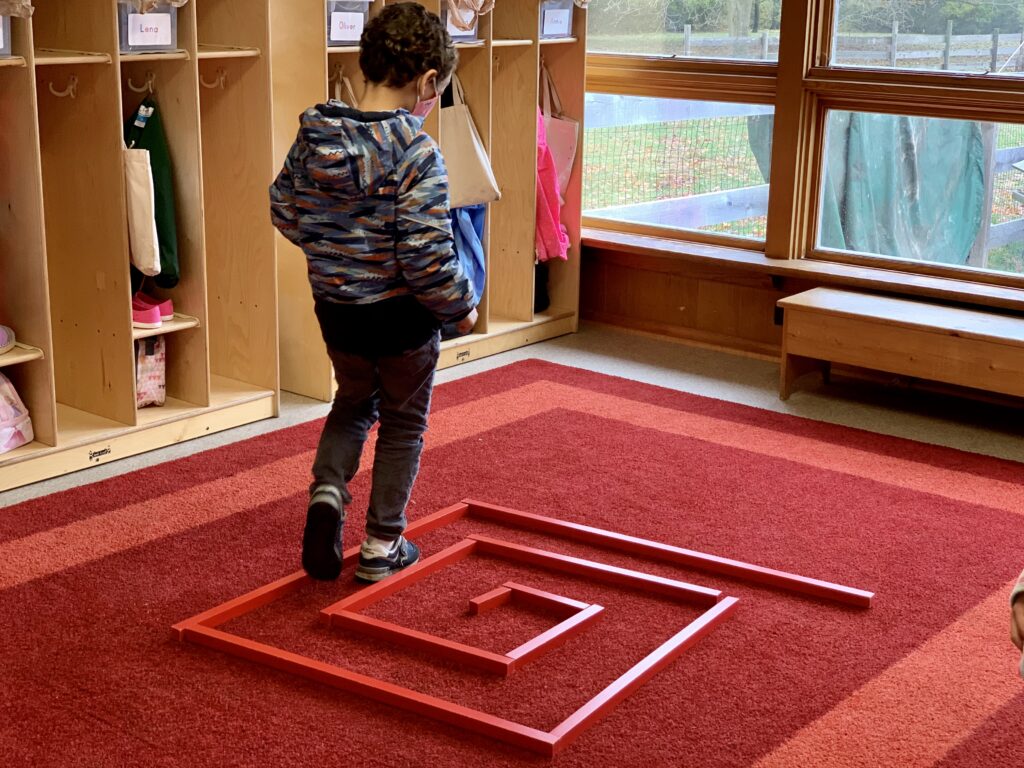






The Sensorial area is one that often confuses those who have not been immersed in the Montessori Method. Dr. Maria Montessori designed sensorial exercises to help young children explore every quality that can be perceived by the senses—size, shape, composition, texture, loudness or softness, matching, weight, temperature, diameter, etc. They also support the first plane of development by utilizing the repetition of order. All of the Sensorial materials are rooted in base ten mathematics. The purpose and aim of Sensorial activities are to fortify the understanding of the science of numbers and provide the language needed to describe a student’s environment.
In the photos above, we can see children working with some of the Sensorial materials. Sorting knobbed and knobless cylinders by height and diameter. The pink tower has ten cubes that vary in length, width, and height. The brown stair is ten rectangular prisms that have a consistent length but vary in height and width. The two are combined with observing how they relate to one another. The red rods increase in length by 10 cm and are first organized by shortest to tallest then, arranged into a spiral maze using perpendicular intersections. The geometric solids bring awareness that shapes form the basis of everyday objects and present the foundations for future geometry mathematics. All of the Sensorial works inspire students to create their own patterns and, in some cases, even create a brand new work.



